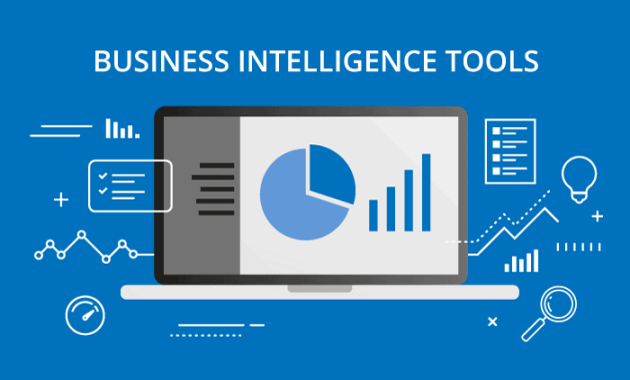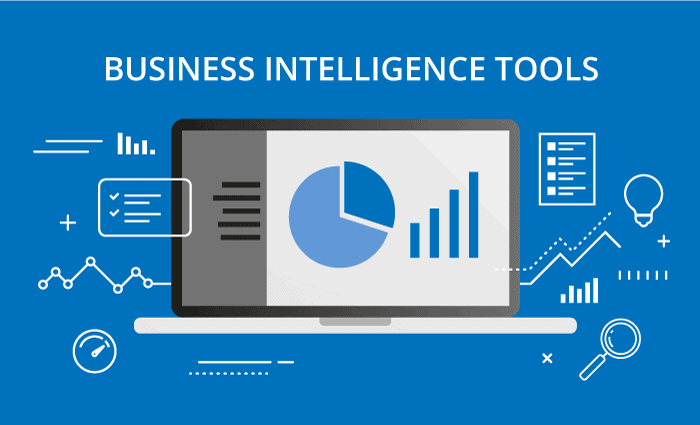
What You Should Know About Business Intelligence Software Tools: A Comprehensive Guide
In today’s data-driven world, businesses are constantly seeking ways to gain a competitive edge. One of the most powerful tools available is business intelligence (BI) software. This guide explores everything you should know about these tools, from their core functions to the benefits they offer and how to choose the right one for your needs. The focus is on providing a clear, concise, and fact-based understanding of this critical technology.
Business intelligence software tools have become indispensable for organizations of all sizes. These tools empower businesses to collect, analyze, and interpret data. The goal is to make informed decisions and improve performance. This guide provides a detailed look at the landscape of business intelligence software.
Understanding Business Intelligence Software
At its core, business intelligence (BI) software is designed to transform raw data into actionable insights. It does this through a variety of functionalities.
- Data Collection: Gathering data from various sources, including databases, spreadsheets, and cloud applications.
- Data Integration: Combining data from different sources into a unified view.
- Data Analysis: Employing techniques like data mining, statistical analysis, and predictive modeling.
- Data Visualization: Presenting data in easily understandable formats such as charts, graphs, and dashboards.
- Reporting: Generating reports that summarize key findings and trends.
Business intelligence software tools are not just about presenting numbers. They are about providing context, identifying patterns, and helping businesses understand the “why” behind the data.
Key Features and Functionalities
Business intelligence (BI) software offers a wide array of features. These features enable businesses to perform complex analyses and gain valuable insights. Here are some of the most important features:
- Data Warehousing: The ability to store and manage large datasets in a centralized repository.
- Online Analytical Processing (OLAP): Enabling multi-dimensional data analysis for quick insights.
- Data Mining: Discovering patterns and trends within large datasets.
- Dashboards and Scorecards: Providing real-time views of key performance indicators (KPIs).
- Reporting and Analytics: Generating customized reports and performing advanced analytics.
- Data Visualization: Creating interactive charts and graphs to communicate data effectively.
- Predictive Analytics: Forecasting future trends and outcomes based on historical data.
The specific features available vary depending on the business intelligence software tools you choose. However, these core functionalities are common across most platforms.
Benefits of Using Business Intelligence Software
Implementing business intelligence software offers numerous advantages. These benefits can significantly impact a business’s performance and decision-making process.
- Improved Decision-Making: Data-driven insights enable better and more informed decisions.
- Increased Efficiency: Automating data analysis and reporting saves time and resources.
- Enhanced Performance: Identifying areas for improvement leads to better overall performance.
- Competitive Advantage: Gaining a deeper understanding of the market and customers.
- Cost Reduction: Identifying inefficiencies and optimizing processes can reduce costs.
- Better Customer Understanding: Analyzing customer data provides valuable insights into customer behavior.
By leveraging these benefits, businesses can achieve significant improvements in their operations and profitability.
Types of Business Intelligence Software Tools
The business intelligence software market offers a diverse range of tools. These tools cater to different needs and budgets. Understanding the various types is crucial for selecting the right solution.
- Self-Service BI: Designed for business users with minimal technical skills. They offer easy-to-use interfaces and pre-built dashboards.
- Enterprise BI: Designed for large organizations with complex data needs. They offer advanced features and scalability.
- Cloud-Based BI: Hosted on the cloud, offering accessibility and scalability.
- On-Premise BI: Installed on a company’s own servers, providing greater control over data.
- Embedded BI: Integrated into existing applications, providing data insights within those applications.
Each type of business intelligence software has its strengths and weaknesses. The best choice depends on your organization’s specific requirements.
Choosing the Right Business Intelligence Software Tool
Selecting the right business intelligence software is a crucial decision. It can significantly impact the success of your data analysis efforts. Here are some key factors to consider:
- Your Business Needs: Identify your specific data analysis goals and requirements.
- Data Sources: Ensure the software can connect to your data sources.
- Ease of Use: Choose a tool that is user-friendly and easy to learn.
- Features and Functionality: Evaluate the features offered by each software.
- Scalability: Ensure the software can handle your growing data volumes.
- Cost: Consider the total cost of ownership, including software licenses, implementation, and training.
- Integration Capabilities: Check if the software integrates with your existing systems.
- Vendor Reputation: Research the vendor’s reputation and customer support.
By carefully considering these factors, you can choose a business intelligence software tool that meets your needs. This will help you maximize the value of your data.
Implementation and Best Practices
Implementing business intelligence software requires careful planning and execution. Following best practices can ensure a successful implementation.
- Define Clear Objectives: Establish specific goals for your BI initiative.
- Data Preparation: Cleanse and prepare your data for analysis.
- User Training: Provide adequate training to users on how to use the software.
- Data Governance: Establish data governance policies to ensure data quality.
- Security: Implement security measures to protect sensitive data.
- Continuous Monitoring: Regularly monitor the performance of your BI system.
- Iterative Approach: Implement the software in phases and make adjustments as needed.
By adhering to these best practices, you can increase the chances of a successful BI implementation.
Examples of Business Intelligence Software Tools
The market offers numerous business intelligence software options. Here are some of the most popular and widely used tools:
- Tableau: Known for its user-friendly interface and powerful data visualization capabilities.
- Microsoft Power BI: A popular choice, offering a wide range of features and integrations.
- QlikView: Provides a unique associative data model for intuitive data exploration.
- Looker: A cloud-based BI platform with a focus on data governance and collaboration.
- Sisense: Offers a comprehensive platform for data analysis and reporting.
These are just a few examples. The best tool for you will depend on your specific requirements.
The Future of Business Intelligence
Business intelligence software is constantly evolving. Several trends are shaping its future:
- Artificial Intelligence (AI) and Machine Learning (ML): AI and ML are being integrated into BI tools. This enables automated insights and predictive analytics.
- Cloud Computing: The cloud is becoming the dominant platform for BI deployment.
- Data Democratization: Making data and insights accessible to all users.
- Mobile BI: Accessing data and insights on mobile devices.
- Self-Service Analytics: Empowering business users to perform their own analysis.
These trends are driving innovation and making business intelligence software even more powerful. This allows businesses to make better decisions.
Conclusion
Business intelligence software tools are essential for businesses seeking to thrive in today’s competitive landscape. Understanding their features, benefits, and how to choose the right one is crucial. By leveraging these tools, businesses can unlock valuable insights, improve decision-making, and achieve their strategic goals. The future of business intelligence is bright, with ongoing advancements in AI, cloud computing, and data democratization.
[See also: The Role of Data in Business Strategy]
[See also: How BI Software Improves Sales Performance]
[See also: The Importance of Data Visualization in BI]
